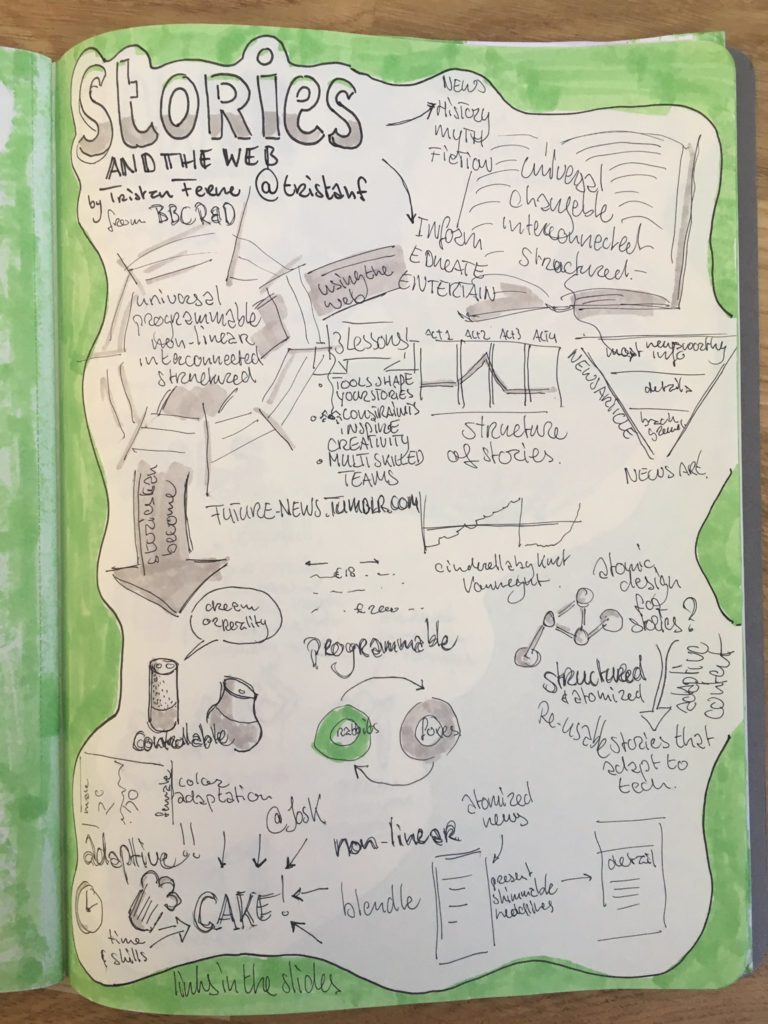Tristan Ferne is the lead producer at BBC Research & Development where he uses technology and design to prototype the future of media and the Web.
Stories have form and structure. Beginnings, middles and endings. People, places and things. Setbacks, climaxes and conflict. And the web has form and structure. Sites, pages & links. Interactivity, personalisation and adaptation.
He’ll look at how stories and the web can interconnect and overlap in forms and structure, showing examples of some of the new ways that people are telling stories using the web. From choosing your level of detail, varying the length, personalising a story and interacting with explanations, to the latest BBC experiments with voice-controlled stories and atomised news.
He explains how the BBC is experimenting with atomising media and deconstructing stories into fundamental, structured building blocks that we can present in new and powerful ways; building responsive stories for the Web.

Because…
We’ve had conversations with members of the BBC R&D team for years. Most recently, they have been experimenting with perceptive media. When we got a chance to get someone who is working on these things to come and talk, we had to jump at the opportunity.
The BBC has been looking at ways to expand what it means to interact with TV via the Web and inversely, what TV means and can become when it is designed for the Web. They have been taking a deep look at the Web as a material longer and better than most.
They blog and write about their experiments regularly, but that doesn’t mean our audience necessarily follow along. Having someone here, in person to be able to talk to and ask questions would be very very valuable.
BBC ➞ Web
The title of the talk was about Storytelling and Tristan did an amazing job of discussion how the BBC is thinking about story structure, narrative, interactions and decisions in that story. Then breaking that down into tiny atomic chunks which can then be re-built, re-used, re-purposed and re-mixed for all sorts of different platforms, locations and mediums.
To me, their mock cooking show C.A.K.E. really demonstrates the power of mixing traditional TV cooking show content and extending it into a personalised experience via the Web. For instance, the entire cooking show video feed isn’t changed, but knowing that, they never back into the audio anything quantity specific. At the start of the show, a dialog asks you how many people you are cooking for. Then when ingredient are referenced in the video, text overlays adjust the ingredient amounts to suit your situation. Another powerful example of divorcing the video content from the context is in reference to timers. When the host says, put the fish in for 20 minutes, a timer starts in the browser. This is independent of the video, so if you pause the video the timer keeps going. This allows you to skip back and forth without the food burning in the oven.
These are just two simple examples, but neither are possible in broadcast TV media. Everyone watching gets the exact same experience through their TV screen, but when augmented with the Web and browser you can start to see how amazing new things can be created.
You can view all the video recordings and subscribe to the Material podcast on the Material Archive site.